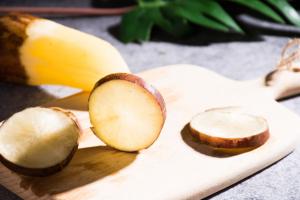Introduction
Tomatoes are a popular and versatile vegetable that can be used in numerous dishes. These plants produce fruit throughout the growing season, and many gardeners are interested in propagating these plants to ensure a bountiful harvest for the next growing season. In this article, we discuss how to propagate tomato plants for next season.
Step 1: Collecting Seeds
The first step in propagating tomato plants is to collect seeds from ripe tomatoes. To do this, select a ripe tomato that is free of cracks and blemishes. Cut the tomato open and scrape out the seeds and pulp. Place the seeds and pulp in a bowl and cover them with water. Allow the mixture to sit for a few days until a layer of mold appears on the surface. This mold helps to break down the gelatinous coating around the seeds, making them easier to germinate.
Step 2: Germinating Seeds
After the seeds have been soaked and the gelatinous coating has been broken down, it's time to germinate them. To do this, spread the seeds out on a paper towel and allow them to dry. Once dried, plant the seeds in a pot of moist soil. Cover the pot with plastic wrap or a clear plastic bag and place it in a warm, sunny spot. Keep the soil moist but not wet, and within a few days, the seeds should begin to germinate.
Step 3: Transplanting Seedlings
When the seedlings have developed their first set of true leaves, it is time to transplant them into individual pots. Use a high-quality potting mix and add a slow-release fertilizer. Be sure to keep the soil moist but not wet and provide the seedlings with plenty of light. As the seedlings begin to grow, pinch off the lower leaves to encourage a strong, sturdy stem.
Step 4: Hardening Off Seedlings
Before transplanting the seedlings into the garden, it's important to harden them off. This process involves gradually exposing the young plants to outdoor conditions, such as wind and sun, to prepare them for life outside. Begin by placing the seedlings outside for a few hours each day, gradually increasing the amount of time they spend outside over a period of about a week. By the end of the week, the seedlings should be ready to be planted in the garden.
Step 5: Planting the Seedlings
When planting the seedlings, choose a sunny location with well-draining soil. Dig a hole that is deep enough to bury the seedling up to its first set of leaves. Gently remove the seedling from its pot and place it in the hole. Fill in the hole with soil and water the plant well. Be sure to provide support for the plant, such as a stake or trellis, to prevent it from bending or breaking as it grows.
Conclusion
Propagating tomato plants from seed is a rewarding experience that can provide a bountiful harvest for the next growing season. By following these simple steps, you can successfully grow healthy, strong seedlings that will produce delicious tomatoes for you to enjoy. With a little patience and care, you can create a thriving tomato garden that will keep you supplied with fresh, ripe produce throughout the growing season.

 how many times do yo...
how many times do yo... how many planted tre...
how many planted tre... how many pine trees ...
how many pine trees ... how many pecan trees...
how many pecan trees... how many plants comp...
how many plants comp... how many plants can ...
how many plants can ... how many plants and ...
how many plants and ... how many pepper plan...
how many pepper plan...































